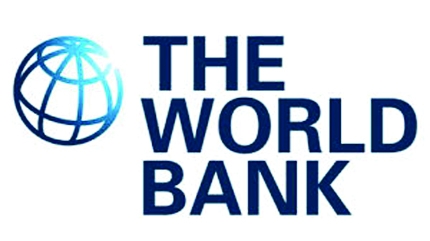
Business Desk :
The Bangladesh economy is expected to grow by 6.4 per cent in the current 2021-22 fiscal year while 6.9 per cent in the 2022-23 fiscal, the World Bank projected. The World Bank made the projection in its “Global Economic Prospects” report.
As per the World Bank estimate, the GDP growth was 5 per cent in the last 2020-21 fiscal. The World Bank report said South Asia’s economy rebounded in the second half of the year following a massive second wave of Covid-19 in mid-2021. “An improvement in domestic demand and resumption of exports contributed to strong growth in Bangladesh,” it says.
Bangladesh’s GDP is expected to reach 6.4 per cent in FY2021/22 ending June 2022, and 6.9 per cent in FY2022/23, due to growing services activity and firming exports of readymade garments.
The consumer inflation in major economies of the region has been above central banks’ targets since late 2019. The World Bank report says the pandemic, and the emergence of the Omicron variant, could hinder economic activity by requiring additional mobility restrictions and undermining external demand.
It adds that risks to the outlook remain to the downside, while another risk stems from financing conditions. Further upward price pressures may cause inflation expectations to become unanchored, worsening domestic financing conditions, eroding real incomes, and weakening the financial sector.
Climate risks are becoming more prevalent in South Asia as cyclones, floods, and droughts have become more frequent and as the costs of such events have increased.
The region is one of the most vulnerable to climate-induced increases in poverty, disease, child mortality and food prices.
The report states that the growth prospects have improved since June 2021, largely because of better prospects in Bangladesh, India, and Pakistan. Regional growth is expected to accelerate to 7.6 per cent in 2022 as pandemic-related disruptions fade, before slowing to 6 per cent in 2023. In most economies, monetary and fiscal policy are expected to remain broadly accommodative in 2022, but gradually shift to a focus on fiscal sustainability and anchoring inflation expectations.
Despite the upward revision to growth, output in 2023 is still projected to be almost 8 per cent lower than projected before the pandemic.
Additionally, the pace of per capita income catch-up with advanced economies is expected to slow over the forecast horizon.
In the subregion excluding India, the report said, growth momentum will pick up over the forecast horizon and is expected to expand by 4.4 per cent in fiscal year 2021/22.
According to the World Bank press release, following a strong rebound in 2021, the global economy is entering a pronounced slowdown amid fresh threats from Covid-19 variants and a rise in inflation, debt, and income inequality that could endanger the recovery in emerging and developing economies.
Global growth is expected to decelerate markedly from 5.5 per cent in 2021 to 4.1 per cent in 2022 and 3.2 per cent in 2023 as pent-up demand dissipates and as fiscal and monetary support is unwound across the world. The rapid spread of the Omicron variant indicates that the pandemic will likely continue to disrupt economic activity in the near term.
In addition, a notable deceleration in major economies-including the United States and China-will weigh on external demand in emerging and developing economies.
At a time when governments in many developing economies lack the policy space to support activity if needed, new Covid-19 outbreaks, persistent supply-chain bottlenecks and inflationary pressures, and elevated financial vulnerabilities in large swaths of the world could increase the risk of a hard landing.

